
Here is Perdita visiting the subjects of one of her favorite childhood books.
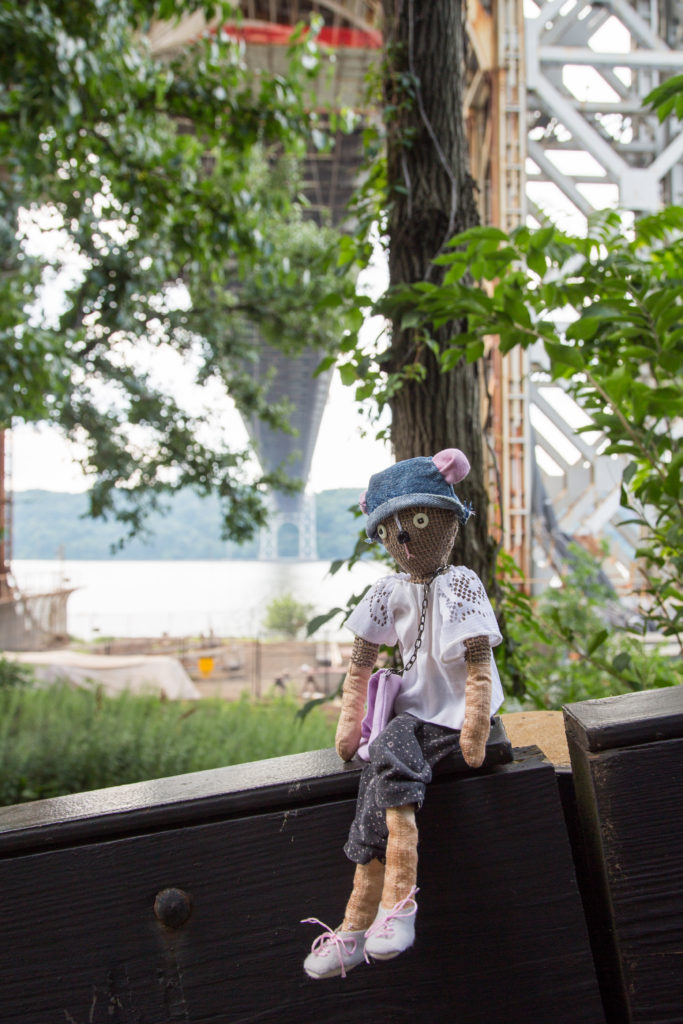
The message of The Little Red Lighthouse and the Great Gray Bridge, by Hildegarde H. Swift and Lynd Ward (1942), is that infrastructure has feelings, too. Well, that’s one message. Perdita relates to the little lighthouse’s dejection at its perceived irrelevance and insignificance, and her heart lifts right along with the lighthouse’s when it realizes it still has an important role to play.
The book is a great example of how, once a thing has a face, you can attribute all kinds of thoughts and feelings to it. It acquires a personality and you have to care about its fate.
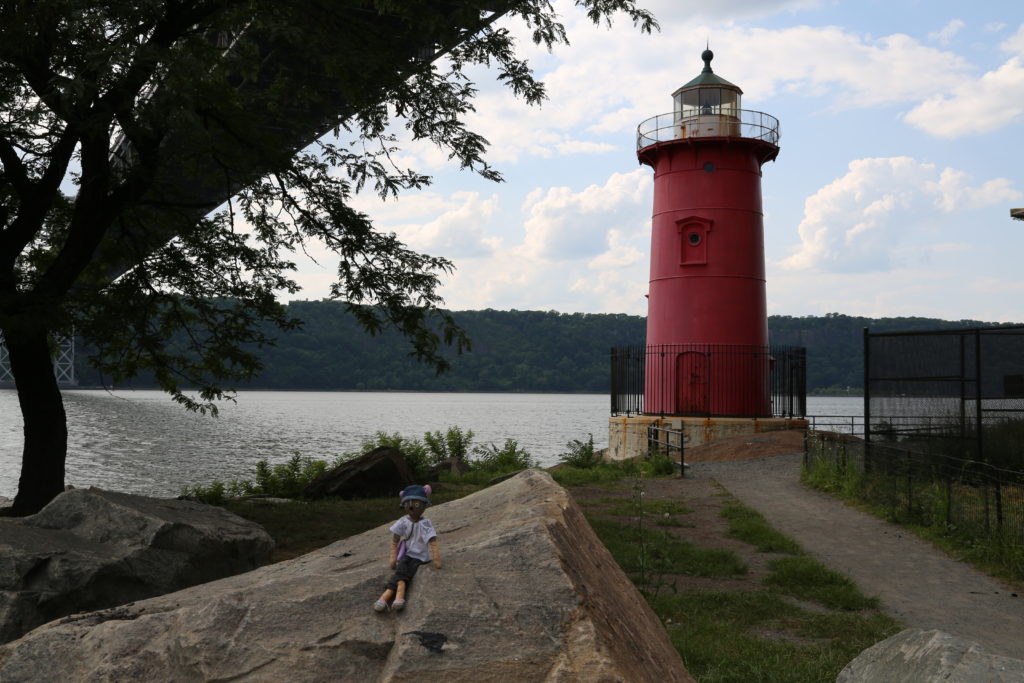
The lighthouse of the book’s title has stood on Jeffrey’s Hook, the bit of land that supports the NY-side base of the George Washington Bridge, since 1921. After the GWB’s opening in 1931 the lighthouse was considered obsoleted by the bridge’s powerful lights, and the Coast Guard decommissioned it in 1948. But a proposal to dismantle the lighthouse met with such public resistance, largely due to the popularity of the book, that the Coast Guard instead turned it over to the NYC Department of Parks and Recreation, in 1951.
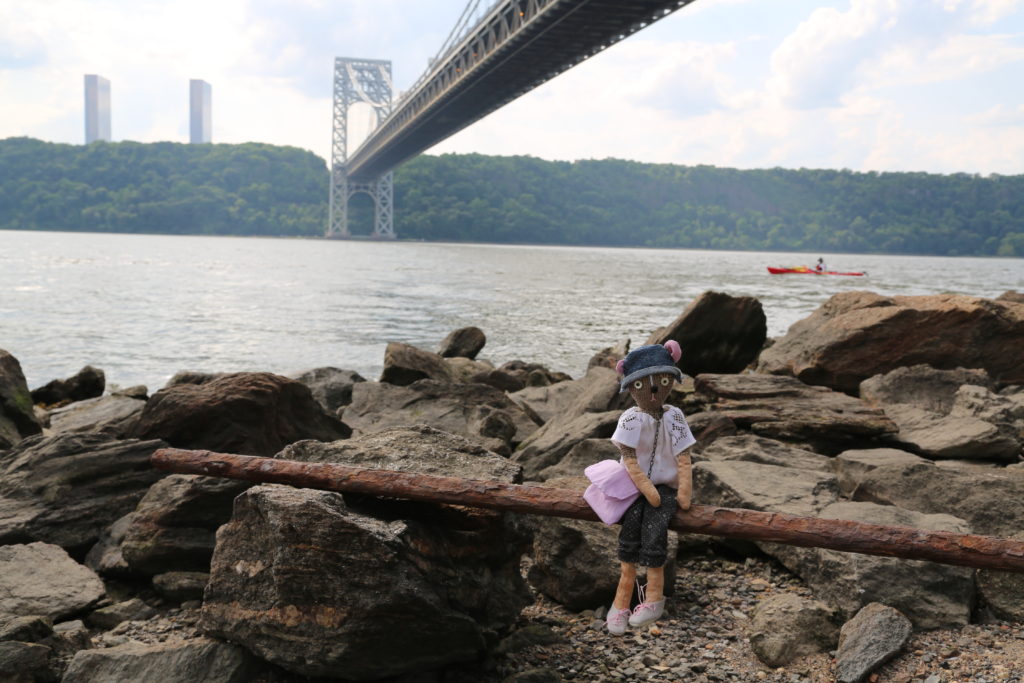
Although the lighthouse doesn’t seem small to Perdita, it is cuddly and loveable compared to the GWB, the world’s busiest motor vehicle bridge.
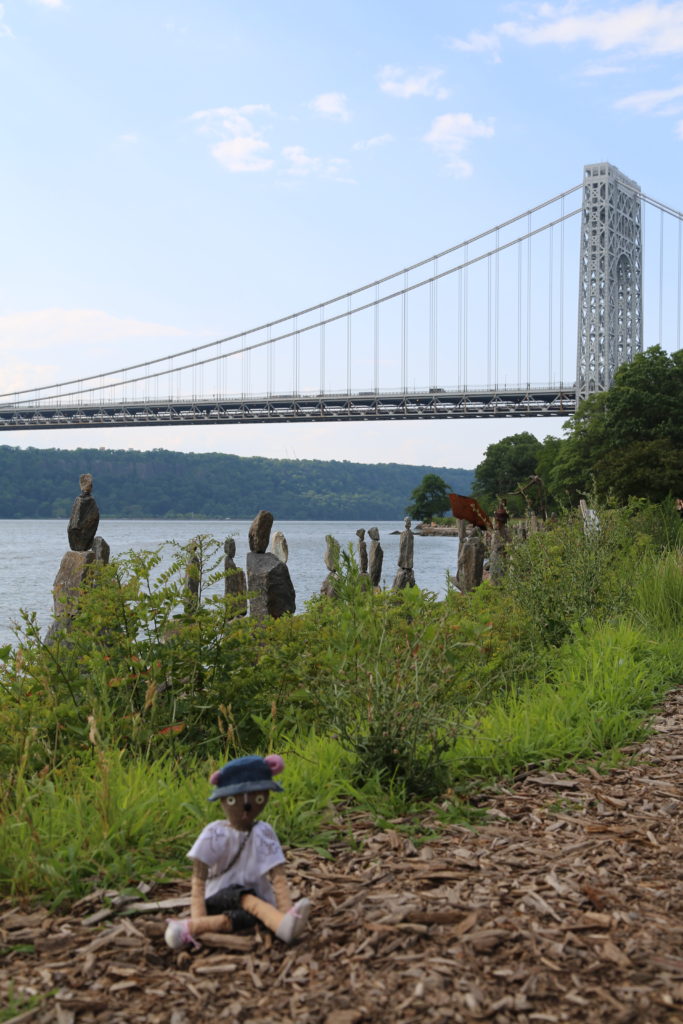
Speaking of structures with faces, further south along the Hudson River Greenway stand, at least most days, the Sisyphus Stones. These cairn-like statues? sculptures? started appearing along the riverbank in July of 2017, at first singly and unpredictably, but now more reliably on this rock beach near 171stStreet.
They are created, by an artist named Uliks Gryka, from rocks found on the river’s edge and washed-up junk. They’re not glued or wired or otherwise secured, they are simply balanced and stacked, and thus they regularly fall due to natural causes or, more typically, are deliberately toppled by vandals. But Gryka rebuilds them every time, and every time he rebuilds, he builds more. Locals have also started to rebuild them, and add some of their own. So, from one day to the next, you can never be sure how many there will be or what form they will take.
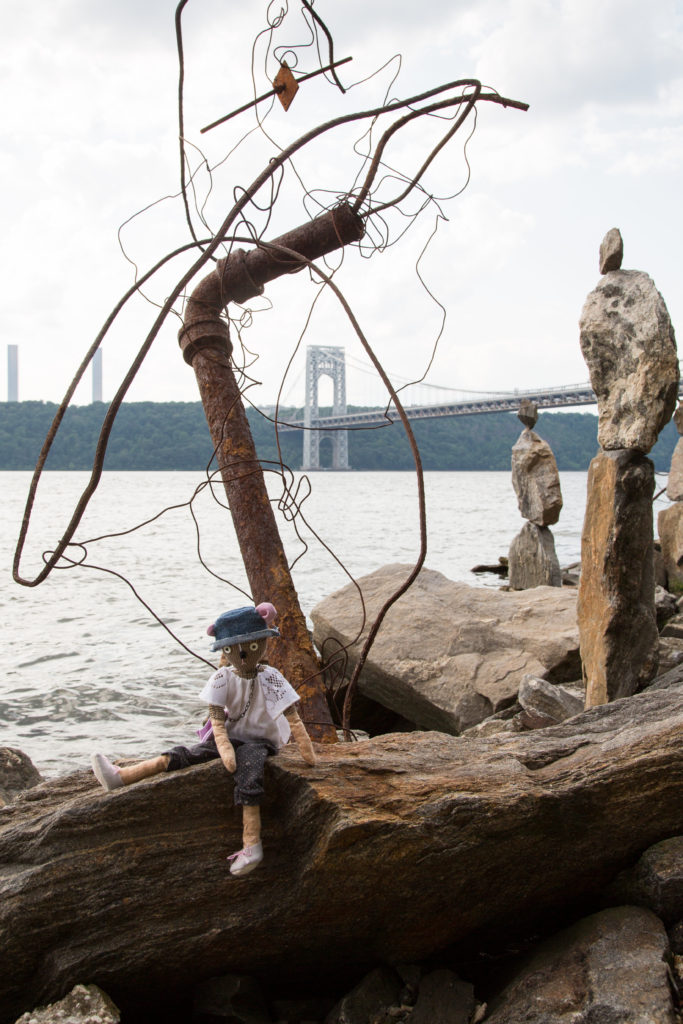
Perdita tries to build one, but it’s much more difficult than it looks. It’s also a little dangerous. The stone figures seem benign but they really are not stable.
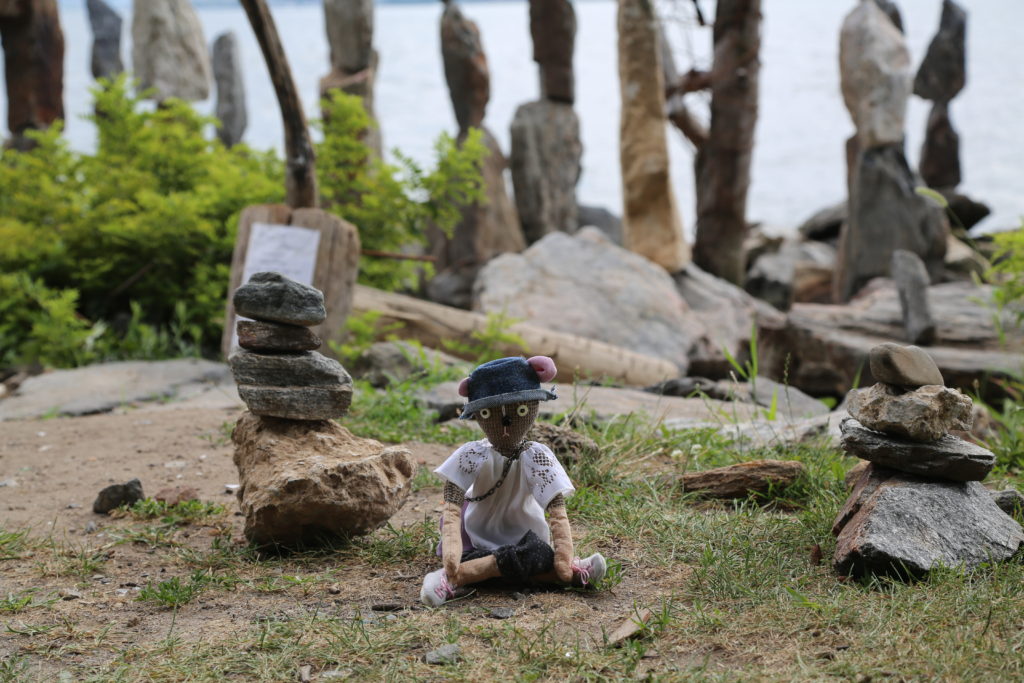
Gryka has said that he began building the figures one evening as he watched the sunset from this beach: he felt that some of the stones around him had faces.
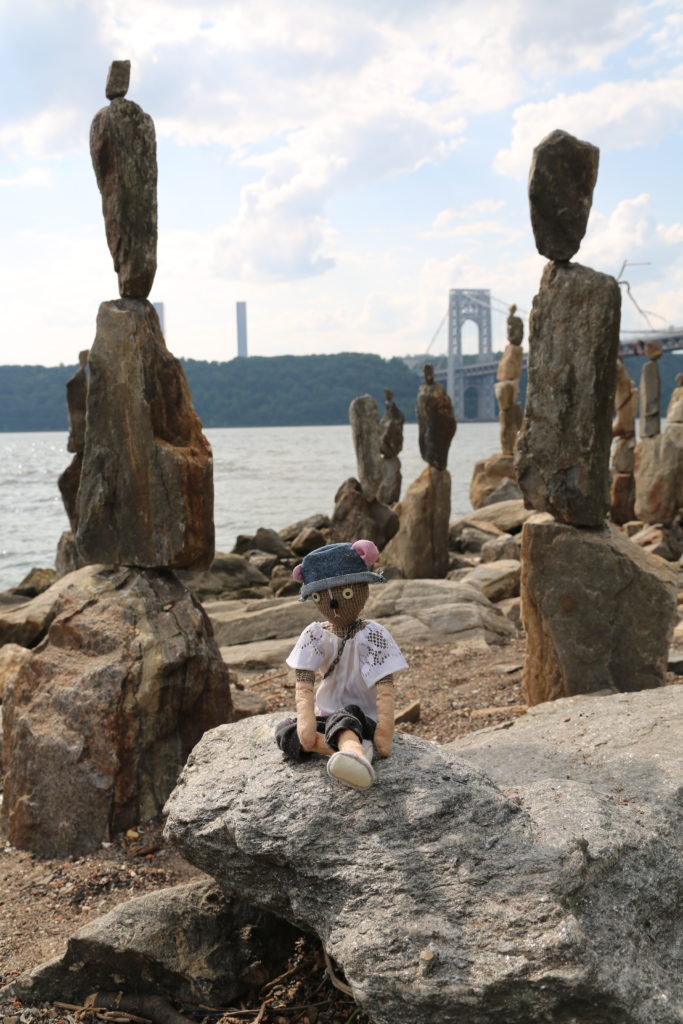
Perdita sees defiance in one figure, protectiveness in another, companionship in two standing adjacent. Strength from their stony makeup, vulnerability from their precarious construction.
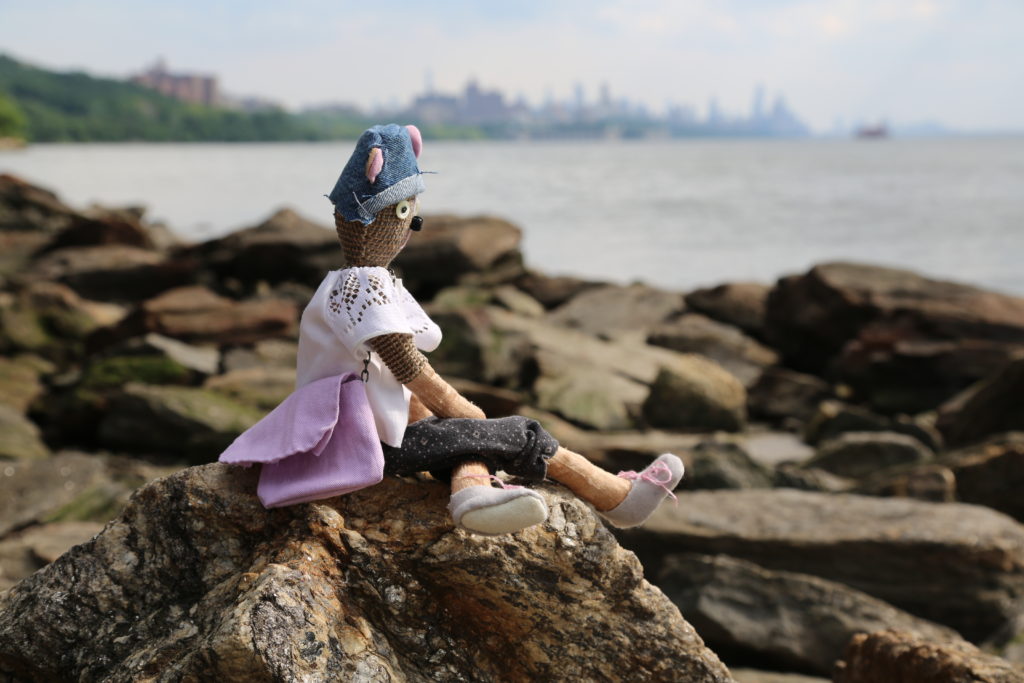
Perdita loves the juxtaposition of materials and forces here on the riverbank: stones, steel, stillness and motion, mythical and mundane, dark lighthouse, coursing traffic, and of course the constant river itself.
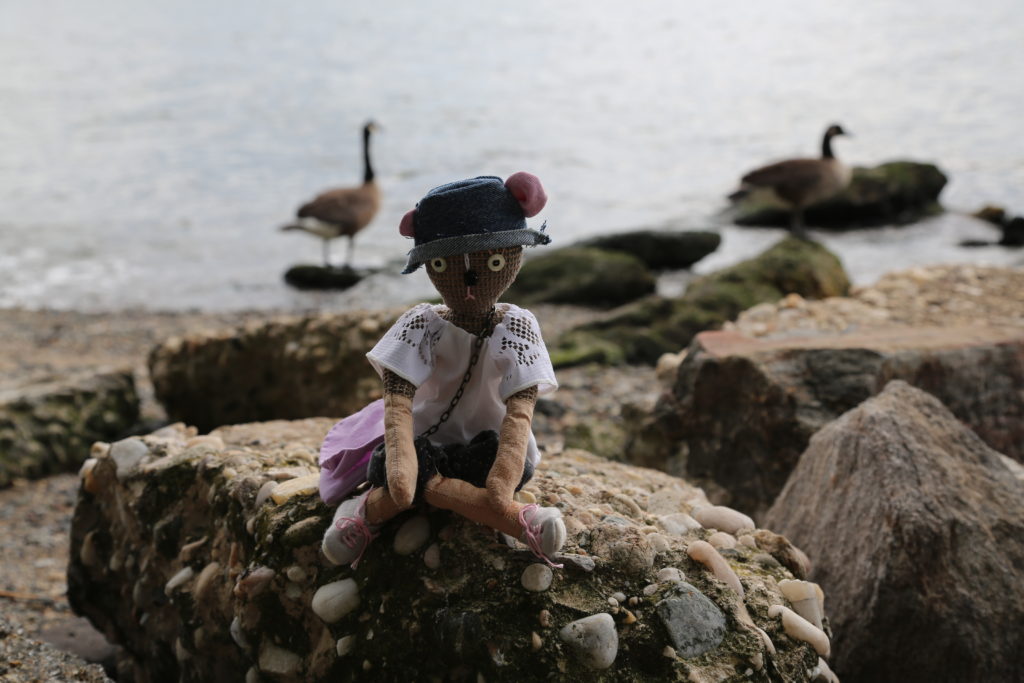
Perdita is made from another upholstery sample from Anne, and material left over from one of my bridesmaid’s dresses. Her blouse is made from an old sheet with sleeves cut from the edging of an old lace tablecloth. Her pants are made from a shirt, her hat is from a pair of baby jeans as is her messenger bag.
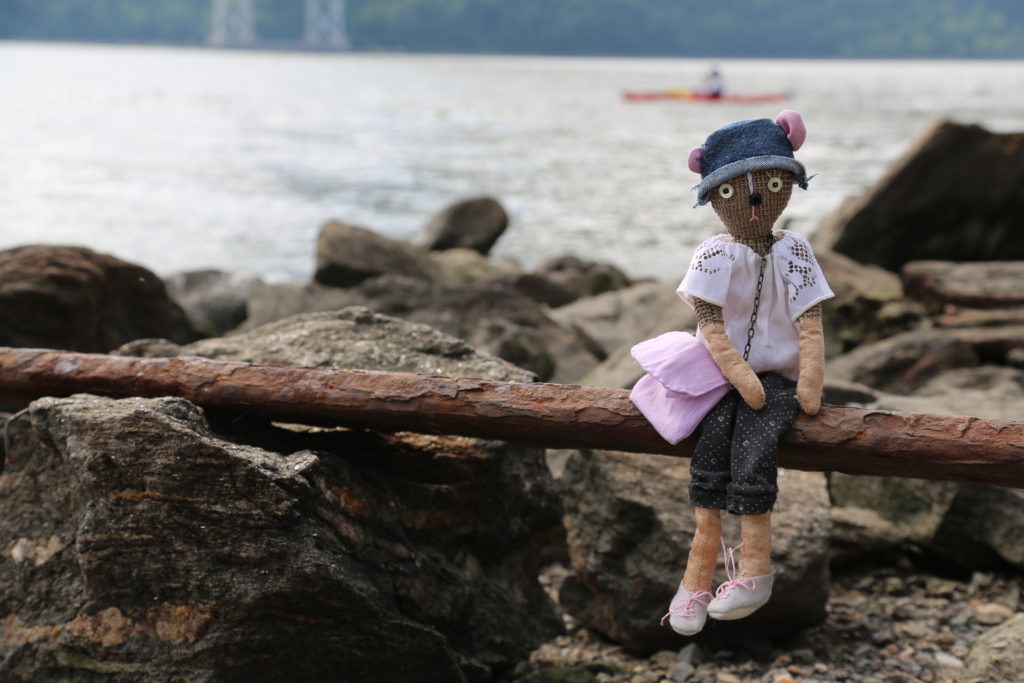
Before it sailed the boats on which the people rode. Up and down, up and down, sailed the boats. On and on and on rolled the river. All the way from Lake Tear-in-the-clouds, high up in the mountains, came the Hudson River. It rolled down the mountains. It rolled and rolled and rolled. It rolled past Albany. It rolled past New York. And it went on forever looking for the sea.
—from The Little Red Lighthouse and the Great Gray Bridge
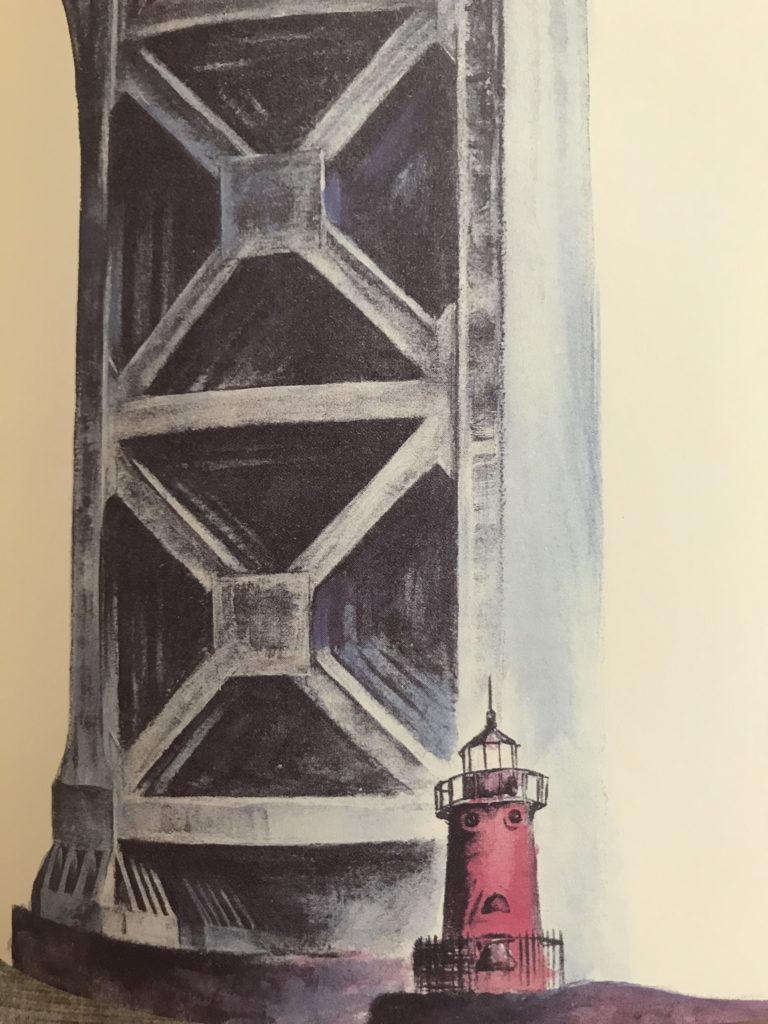
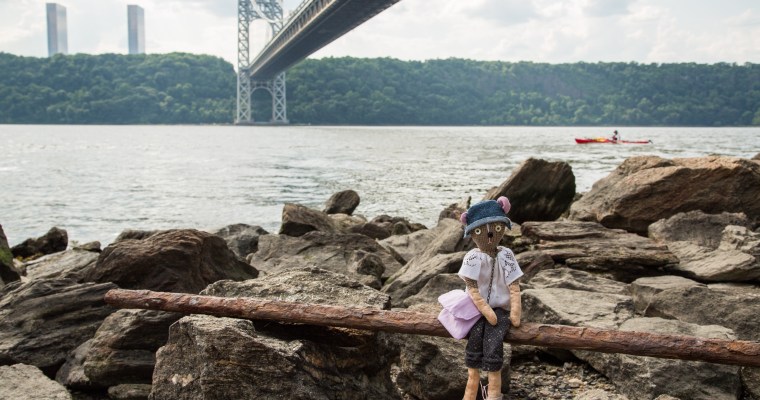
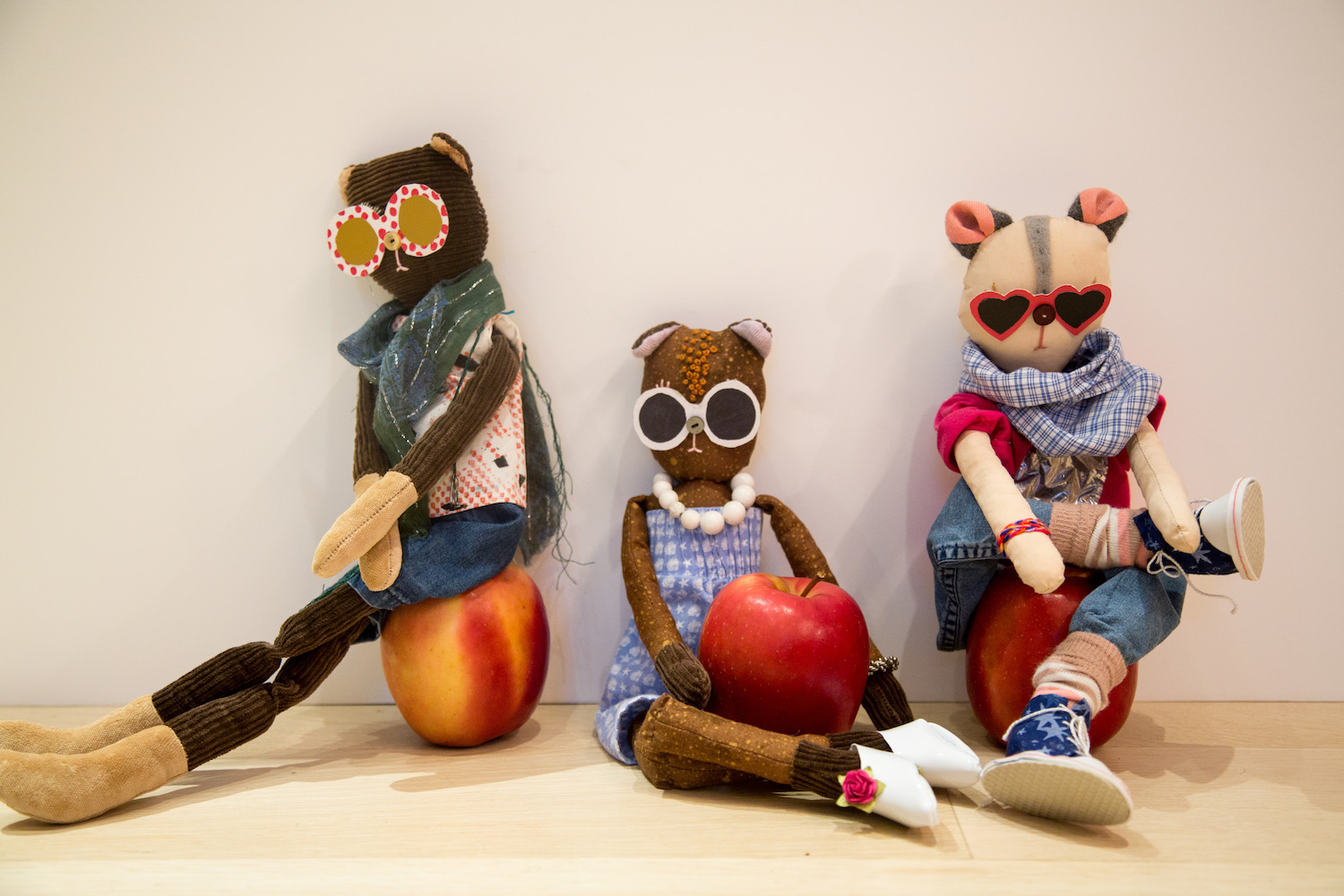
I love the story and message of the Little Red Lighthouse and Perdita’s feelings about it. Her sweet little lace-detailed blouse and messenger bag made her an adorable little heroine, even trying to build a little Sisyphus Stone herself. Wonderful , heart-warming, mini-sized little destination for NYCers otherwise used to gigantic things.
Thank you!! It’s a special thing about NY: the more intimate surprises that can be found in the interstices, and the vast differences in scale.